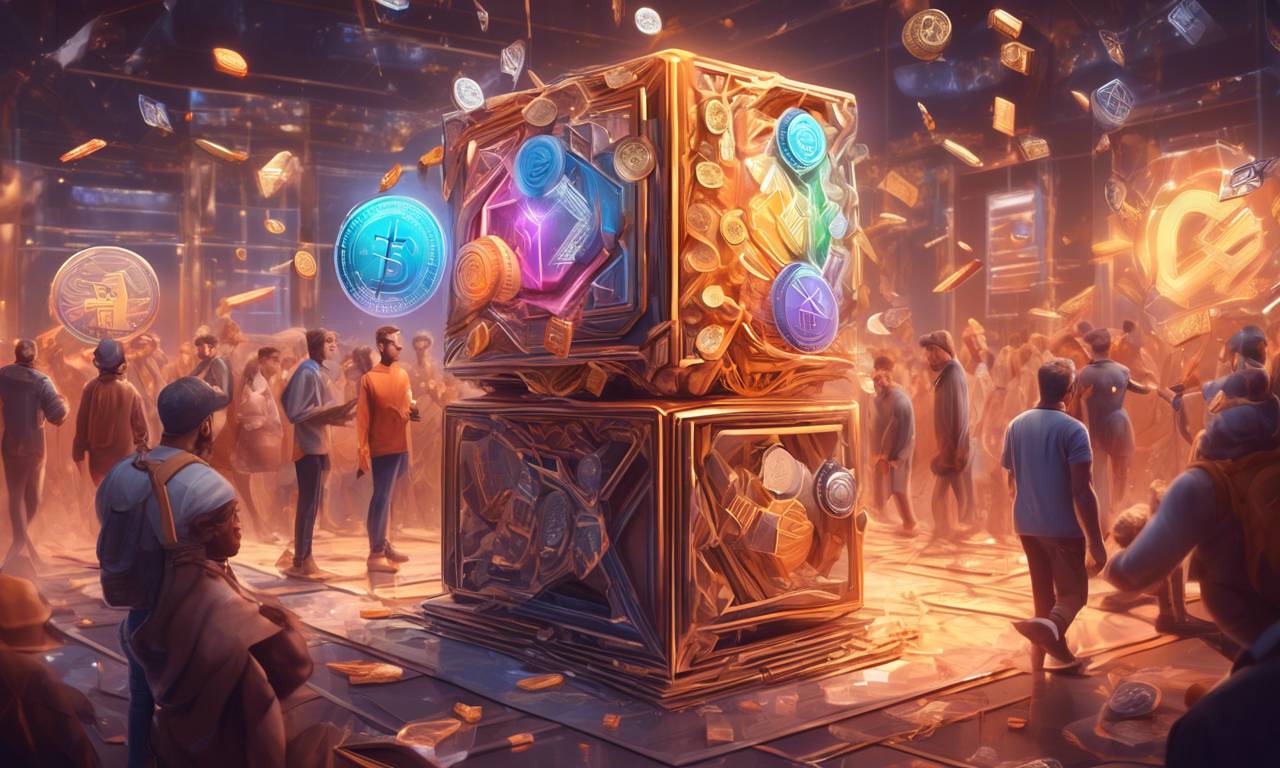ERC Token Standards: How They Revolutionize Tokenization on the Ethereum Blockchain
Welcome to the world of cryptocurrencies! If you are new to this exciting digital realm, you might have come across terms like ERC20, ERC721, or ERC1155. Don’t worry if these acronyms sound like gibberish to you right now. In this article, we will dive into the fascinating world of ERC token standards and explore how they revolutionize tokenization on the Ethereum blockchain. So fasten your seatbelt and get ready for an enlightening journey!
What are ERC Tokens?
ERC stands for “Ethereum Request for Comments,” which is a formal process used by the Ethereum community to propose improvements and standards for the Ethereum network. ERC tokens are digital assets that are built on top of the Ethereum blockchain using these standardized rules.
Now, you might be wondering what tokenization means. Tokenization is the process of representing real-world or virtual assets as digital tokens on a blockchain. These tokens can represent anything from cryptocurrencies to digital collectibles, real estate properties, or even ownership shares in a company.
The Evolution of ERC Token Standards
The Ethereum blockchain has been a hotbed of innovation since its inception in 2015. It started with the introduction of ERC20, which quickly became the de facto standard for creating and launching new tokens on Ethereum.
ERC20: The King of Tokens 👑
ERC20 is the most widely adopted token standard on the Ethereum blockchain. It defines a set of rules that a token must follow to be considered an ERC20 token. These rules include functions such as transferring tokens between addresses, checking balances, and approving spending allowances.
Thanks to its simplicity and compatibility, ERC20 tokens have played a crucial role in the growth of the decentralized finance (DeFi) ecosystem. They enabled the creation of stablecoins like Tether (USDT) and DAI, as well as countless other utility and governance tokens.
ERC721: Unique and Non-Fungible Tokens 🎨
While ERC20 tokens are fungible, meaning each token is identical and interchangeable, ERC721 introduced the concept of non-fungible tokens (NFTs). NFTs are unique and indivisible tokens that represent ownership or proof of authenticity for a specific asset.
Artists, game developers, and collectors quickly embraced ERC721 tokens for their ability to represent one-of-a-kind digital assets. From digital art pieces to virtual real estate and rare in-game items, ERC721 NFTs have created a new wave of digital ownership and value.
ERC1155: The Best of Both Worlds 🌍
Building on the success of ERC20 and ERC721, the Ethereum community introduced ERC1155 as a hybrid token standard. It combines the advantages of both fungible and non-fungible tokens in a single contract.
With ERC1155, developers can create contracts that support multiple token types within a single deployment. This means that one smart contract can handle both fungible and non-fungible tokens, reducing deployment costs and enhancing efficiency.
The Benefits of ERC Token Standards
The introduction of ERC token standards has brought several benefits to the Ethereum ecosystem. Let’s explore some of them:
Interoperability 🤝
ERC token standards ensure interoperability between different projects built on the Ethereum blockchain. This means that tokens created using these standards can seamlessly interact with other decentralized applications (DApps), wallets, and exchanges.
For example, if you own an ERC20 token, you can easily trade it on a decentralized exchange like Uniswap or store it in popular Ethereum wallets like MetaMask or MyEtherWallet.
Accessibility and Liquidity 💰
ERC token standards have significantly lowered the barrier to entry for creating and launching new tokens. This accessibility has led to an explosion of tokenized assets, making them more liquid and tradable.
In the past, if you wanted to create your own digital currency or launch an initial coin offering (ICO), you would need to develop your own blockchain from scratch. With ERC20, anyone can create their own token within minutes by following the standard rules.
Innovation and Experimentation 🚀
The standardized nature of ERC tokens has fostered a culture of innovation and experimentation within the Ethereum community. Developers are constantly pushing the boundaries of what is possible with tokens, leading to groundbreaking projects and use cases.
From decentralized lending protocols like Compound to virtual worlds like Decentraland, ERC tokens have enabled a wide range of innovative applications that were previously unimaginable.
Frequently Asked Questions (FAQs)
Q: Can I convert an ERC20 token into an ERC721 token?
A: No, ERC20 and ERC721 are fundamentally different token standards. You cannot directly convert one into the other. However, you can design a mechanism that allows users to exchange or swap between different token types.
Q: Are ERC tokens only used on the Ethereum blockchain?
A: Yes, ERC tokens are specific to the Ethereum blockchain. Other blockchains may have their own token standards with similar functionalities.
Q: How can I create my own ERC token?
A: Creating your own ERC token is relatively straightforward. You need to write a smart contract that follows the rules of the desired ERC token standard, such as ERC20 or ERC721. Once the smart contract is deployed on the Ethereum network, your token will be up and running.
Q: Are all ERC tokens secure?
A: While ERC tokens themselves are not inherently insecure, vulnerabilities can arise from poorly written smart contracts or external factors like phishing attacks. It’s crucial to conduct thorough audits and security checks before deploying or interacting with any ERC token.
🎉 Congratulations! You’ve just scratched the surface of ERC token standards and their impact on tokenization within the Ethereum blockchain. Remember, these standards have revolutionized the way digital assets are created, traded, and owned. So keep exploring this exciting ecosystem, and who knows, maybe you’ll create the next groundbreaking ERC token!
Edulia Coinfield’s journey from a curious technology enthusiast to a highly regarded crypto educator and analyst is a testament to her passion for knowledge-sharing and the immense potential of blockchain technology. Her contributions to the industry and dedication to empowering others have solidified her position as a prominent woman figure in the world of cryptocurrencies.

